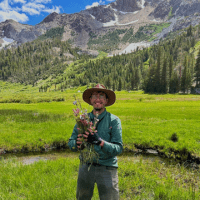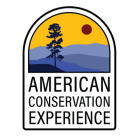ACE Alumni Update – James
 Recently we caught up with ACE Alumni James who currently works as a Field Botanist/Research Assistant for the University of Nevada Las Vegas. James shares his conservation path and examples of how his work is making an impact.
Recently we caught up with ACE Alumni James who currently works as a Field Botanist/Research Assistant for the University of Nevada Las Vegas. James shares his conservation path and examples of how his work is making an impact.
“We are conducting surveys all throughout the Mojave and Sonoran deserts and looking into how drought impacts local species. Like what does annual species recruitment look like when these “fertile island shrubs” which usually support life have died due to drought, and how much does elevation play a role in this. The job is a lot of plant identification and following survey protocols, thankfully I have been to some of the areas we are surveying at and have knowledge on a lot of the rare species that occur there.
My conservation path started in college when I was working towards a drafting degree, I had to take an environmental science class and I fell in love with the complex ecologies of the world, so I switched majors and worked at my university’s arboretum for 3 years and was surrounded by biologists and got to participate in prescribed burns, fire ecology research, and even amphibian genetics collecting.
I worked on an ACE chainsaw crew in California before hopping into a wilderness restoration position with the BLM in the western Mojave/southern Sierra where I fell in love with both desert plants and Sierra plants. I then took a position with the California Desert District (BLM internship through EPIC) to work as a rare plant technician traveling across southern California surveying for some of the rarest plants ever recorded on public land, it was a dream job during a historic wet year (2023) and I was incredibly spoiled my first year working as a botanist.
I followed that historic wet year into the Sierra’s and worked as an assistant botanist (NPS internship through EPIC) for Sequoia & Kings Canyon National Park, it was one of the most magical experiences of my life watching snowcapped mountains turn pink with wildflowers, I was helping create a climate change resilient seed bank for the park and got to work with so many amazing plants that felt so alien compared to the desert botany I had taught myself.
Towards the latter half of the season, we switched roles and began to focus on restoration in the parks heavily burnt areas, I worked with outside contractors and other conservation organizations like the amazing Eastern Sierra Conservation Corps to plant Giant Sequoias in the park’s wilderness.
My career goal is to become a conservation botanist working to protect and ensure rare plant species have a future by collecting seed, studying them, and working with the federal government to place protections on them and the environments they grow in.
